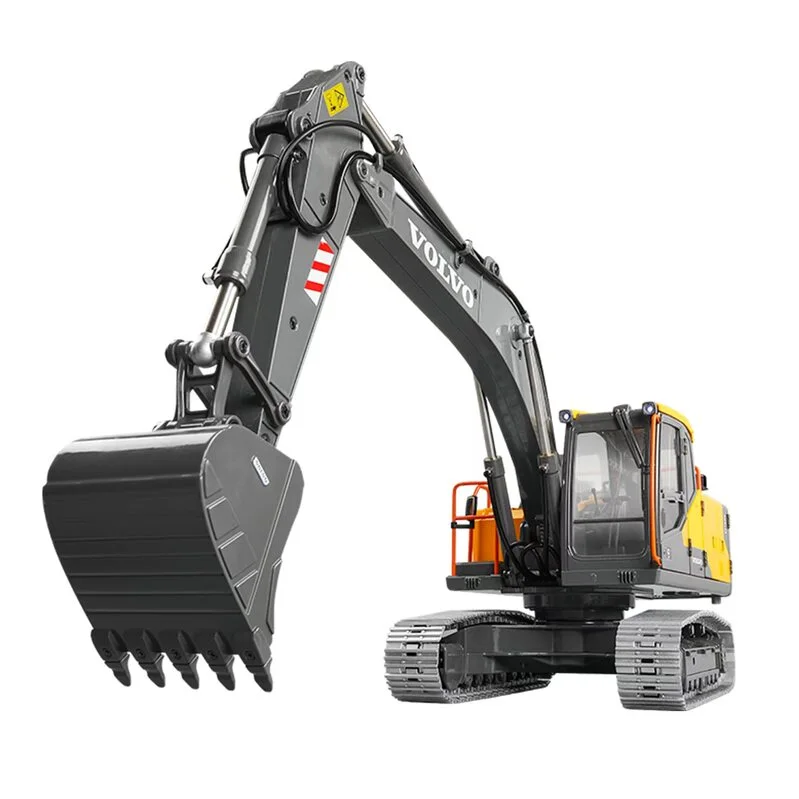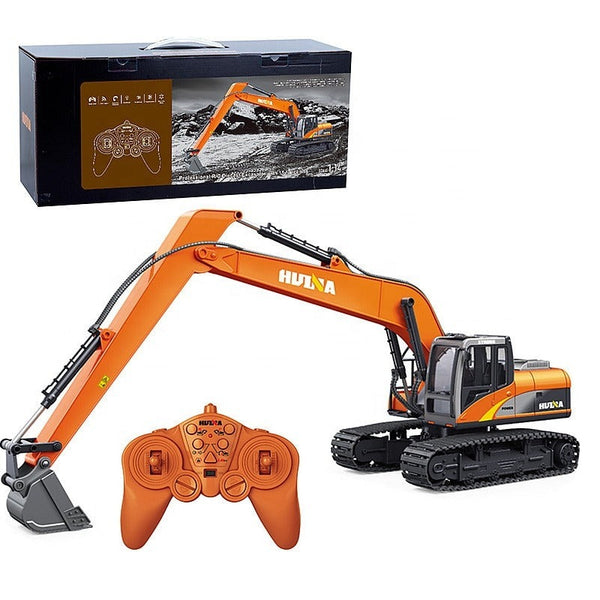The Necessary Functions of Excavator That Make Things a Must-Have Tool
Excavators are essential in the building and construction and landscaping industries. Their functional attachments permit a series of tasks, from digging to demolition. In addition, they flaunt premium digging depth and reach, powered by robust engines. Driver comfort and portable layouts boost usability in different settings. Nonetheless, what absolutely sets excavators apart are their innovative hydraulic systems and longevity. Understanding these attributes can clear up why they are considered crucial tools on any task website.
Functional Add-ons for Improved Capability
Excavators are effective makers on their very own, the enhancement of versatile add-ons substantially boosts their performance. These accessories transform a conventional excavator right into a multi-purpose device, appropriate for a range of tasks. Containers, for example, can be found in numerous forms and sizes, allowing drivers to dig, scoop, and relocate materials effectively. Hydraulic thumbs can be included for improved gripping and handling of bulky things, such as logs or rocks.Furthermore, specialized add-ons like augers and breakers enable boring and demolition work, increasing the excavator's utility on construction sites. remote control excavator. Grapples are an additional alternative, suitable for moving and sorting particles. This versatility not just raises efficiency however also decreases the need for several equipments, saving time and prices. By gearing up excavators with the ideal add-ons, operators can take on diverse tasks, making them vital in the construction market
Superior Digging Deepness and Get To
Excavators are developed with superior digging depth and reach, permitting them to maneuver in limited spaces and gain access to hard-to-reach areas. This capacity is essential for numerous building and construction and excavation projects, where standard equipment might fail. With adjustable boom arms and extendable tracks, excavators can easily browse uneven surface while keeping stability.The digging depth can vary substantially among designs, frequently ranging from 10 to 25 feet, relying on the layout and function. This attribute enables operators to dig deep into structures, trenches, and various other deep frameworks effectively. In addition, the reach of an excavator enables specific digging and material handling without rearranging the machine regularly, conserving time and labor costs.Ultimately, the premium excavating depth and reach of excavators make them crucial for specialists looking for to complete complex jobs with precision and performance. Their adaptability boosts productivity on task websites, showcasing them as an essential device in contemporary building.
Powerful Engine Efficiency

Powerful engine efficiency plays an essential function in the capabilities of an excavator when it comes to performance and efficiency on building websites. A durable engine generates substantial horsepower, enabling the machine to deal with sturdy tasks effortlessly - remote control excavator. This stamina translates right into faster cycle times, making it possible for drivers to total jobs much more quickly.Additionally, effective engines provide the needed torque to handle tough surfaces and differed loads, making sure that the excavator can do successfully under different conditions. Whether it is raising, excavating, or moving materials, the engine's performance directly influences the general functional efficiency of the machine.Furthermore, developments in engine innovation have actually caused boosted gas performance, lowering functional prices while maintaining power outcome. Inevitably, the engine's performance works as the backbone of an excavator, verifying its condition as an important tool in the building market
Advanced Hydraulic Solutions

Improved Raising Ability
A considerable improvement in raising capacity can be attributed to sophisticated hydraulic systems located in modern-day excavators. These systems use high-pressure liquid to create higher pressure, permitting operators to lift larger loads easily. The engineering behind these hydraulics guarantees peak efficiency, offering an impressive power-to-weight ratio that enhances total efficiency. As an outcome, excavators can take on demanding jobs, such as lifting big materials or equipment, without endangering stability. Additionally, the durable layout of hydraulic elements adds to boosted durability and integrity, making them appropriate for various building and construction environments. This boosted lifting ability not just reduces the moment needed for projects yet likewise minimizes the need for additional equipment, proving crucial for both performance and cost-effectiveness in the building market.
Improved Accuracy Control
Although typical excavators often dealt with precision, modern-day hydraulic systems have actually transformed control mechanisms, enabling operators to carry out jobs with remarkable precision. These innovative systems utilize symmetrical control valves that permit for smoother and a lot more responsive movements, considerably reducing the margin for error. Operators can currently carefully tune the excavator's motions, making it simpler to browse limited areas and handle delicate materials. Enhanced responses systems further inform drivers of real-time performance, making sure optimal coordination between the equipment and operator. This increased precision not just boosts effectiveness however additionally improves safety and security on job sites, minimizing the threat of crashes. Therefore, modern-day excavators equipped with innovative hydraulic systems are vital devices for building and excavation projects needing precise precision.
Operator Comfort and Visibility
Operator comfort and presence are crucial components in the design of modern-day excavators (remote control excavator). Attributes such as ergonomic seat layout, improved exposure choices, and effective control designs significantly enhance the driver's experience and efficiency. Focusing on these aspects warranties that operators can work efficiently and securely in various conditions
Ergonomic Seat Design
Convenience and presence are vital in excavator style, with the ergonomic seat playing a crucial duty in boosting the driver's experience. An ergonomic seat is engineered to sustain the operator's body, decreasing fatigue during lengthy hours of operation. Flexible functions, such as seat elevation, back-rest angle, and lumbar assistance, deal with specific preferences and advertise suitable pose. These changes enhance convenience and enable the driver to maintain emphasis on jobs without pain. Furthermore, a properly designed seat can offer far better lateral assistance, permitting for smoother handling when the excavator functions. This thoughtful Homepage style not only increases performance yet additionally adds to general security, guaranteeing that operators can execute their duties efficiently and efficiently.
Improved Presence Functions
The layout of an excavator extends beyond simply the seat, with boosted visibility attributes playing a significant duty in driver comfort and overall safety. Large home windows and purposefully positioned mirrors provide drivers with a clear view of their surroundings, lessening blind places. This layout consideration permits much better spatial awareness, which is necessary in active work atmospheres. In addition, many excavators integrate rearview electronic cameras and progressed monitoring systems that assist operators in steering tight areas. The assimilation of these presence includes not only promotes security yet likewise decreases driver fatigue by enabling less complicated monitoring of workplace. Inevitably, enhanced visibility adds to a lot more efficient operations and aids guarantee that excavators can execute their jobs effectively and securely.
Control Design Performance
While handling facility work sites, a reliable control format considerably boosts both operator convenience and exposure. A well-designed control arrangement warranties that operators can access important functions with very little effort, reducing fatigue during long hours. Ergonomic joystick placements and instinctive button setups permit seamless procedure, enabling operators to maintain emphasis on the task handy. Additionally, clear presence of both the work area and the control panel is important for security and precision. Modern excavators frequently include adjustable seating and control setups to suit various driver choices, better enhancing convenience. Ultimately, an attentively made control layout not only improves efficiency but also promotes a safer working atmosphere by enabling drivers to respond promptly to altering problems.
Compact Style for Urban Environments
As urban building sites usually encounter area constraints, a compact layout ends up being crucial for excavators running in these atmospheres. These machines are engineered to navigate tight areas, permitting for reliable ability to move in congested job sites. A reduced footprint allows them to work very closely to existing structures, minimizing disturbance and taking full advantage of productivity.The portable design usually includes shorter tracks and a tighter turning span, facilitating operation in narrow alleys and constrained areas. In addition, light-weight products add to alleviate of transportation, making it simpler to move the excavator from one area to an additional within the metropolitan landscape.Additionally, many portable excavators are outfitted with functions such as extendable arms and flexible attachments, boosting their performance while keeping a small dimension. This flexibility enables operators to tackle a range of jobs, from digging to demolition, all while fitting perfectly into the restraints of city atmospheres.

Durability and Maintenance Considerations
Durability stands as an essential element in the performance and long life of excavators, particularly popular metropolitan settings. These machines go through strenuous problems, consisting of varying soil kinds, severe temperatures, and high-frequency usage. High-grade products and robust building and construction are required for her explanation guaranteeing that excavators can withstand these difficulties without endangering functionality.Regular maintenance is just as essential in maintaining longevity. Scheduled inspections, prompt oil adjustments, and the replacement of worn elements contribute substantially to an excavator's life-span. Operators has to additionally focus on hydraulic systems, tracks, and undercarriages, as these components frequently bear the burden of wear and tear.Investing in durable excavators with substantial upkeep plans enhances integrity and decreases downtime, ultimately resulting in boosted efficiency on construction sites. Consequently, comprehending the interaction between longevity and upkeep is important for anyone considering the purchase of an excavator for metropolitan projects.
Frequently Asked Inquiries
How Do Excavators Compare to Various Other Building Tools?
Excavators attract attention amongst construction tools as a result of their adaptability, making it possible for jobs such as grading, training, and digging. Compared to others, their hydraulic capacities supply higher efficiency and power, making them crucial on various work sites.
What Safety And Security Includes Are Included in Modern Excavators?
Modern excavators include different security functions, including rollover defense systems, alarms, and progressed visibility enhancements. These elements interact to lessen threats, making certain operator safety while improving efficiency on construction websites and other demanding atmospheres.

Can Excavators Be Used in Wintertime Conditions?
Excavators can without a doubt be made use of in wintertime conditions, supplied they are equipped with appropriate winter attachments and safety measures are taken. Appropriate maintenance and adjustments improve their performance, making sure efficient operation regardless of tough weather condition situations.
What Is the Typical Lifespan of an Excavator?
The average life expectancy of an excavator typically varies from 7,000 to 10,000 hours of operation. This duration can considerably description depend on maintenance practices, operating conditions, and the certain version's longevity and style attributes.
Exactly how Do I Choose the Right Excavator Size for My Job?
Picking the ideal excavator size involves reviewing project range, website conditions, and material kinds. Consider factors like reach, depth demands, and weight ability to ensure optimal efficiency and safety and security throughout operation. Dimension issues significantly in job success. Furthermore, the reach of an excavator allows for precise excavating and material handling without rearranging the machine frequently, conserving time and labor costs.Ultimately, the premium excavating depth and reach of excavators make them indispensable for specialists looking for to complete complex tasks with precision and efficiency. Comfort and presence are critical in excavator style, with the ergonomic seat playing a crucial function in boosting the operator's experience. The style of an excavator prolongs beyond simply the seat, with boosted visibility functions playing a considerable duty in operator convenience and total security. Modern excavators often integrate adjustable seats and control setups to suit numerous operator choices, further enhancing comfort. Lightweight products contribute to reduce of transport, making it easier to relocate the excavator from one area to an additional within the city landscape.Additionally, numerous compact excavators are equipped with functions such as flexible accessories and extendable arms, improving their performance while keeping a small size.